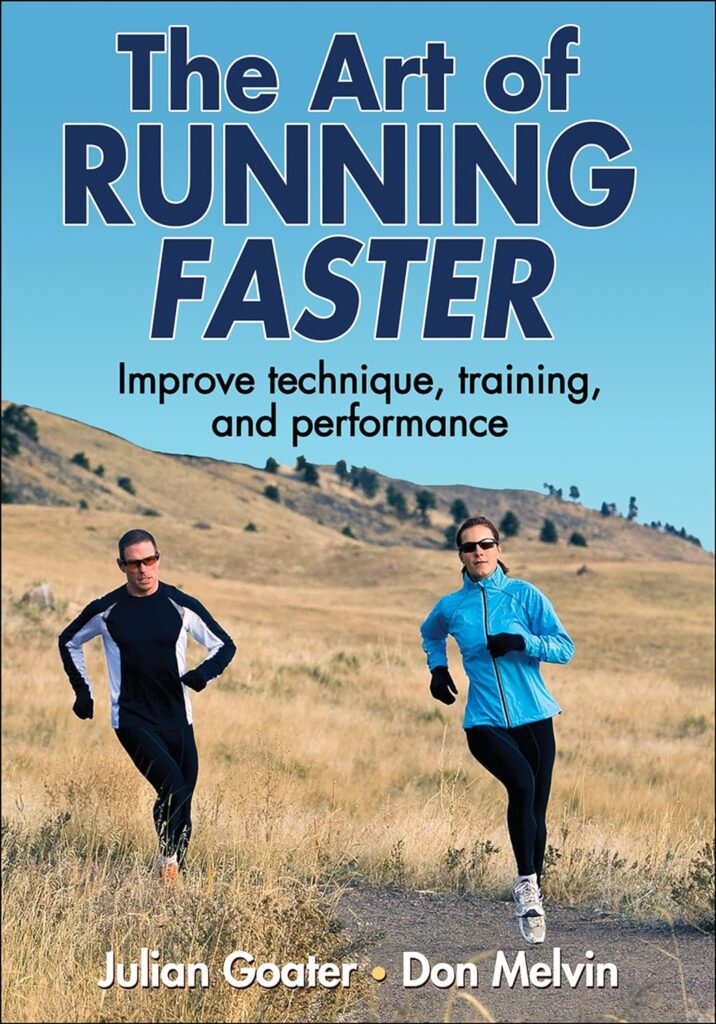I have mixed feelings about this book, first published in 2012. Most runners want to run faster. But how? Julian Goater, 1981 National Cross Country champion, shares his insights in this title.

With a mixture of anecdote and specific training advice, he expands on six components of fitness: speed, suppleness, strength, stamina, skill and psychology. Some of his advice is uncontentious: do core strength training, for example, and do different types of training sessions including fartleks (short bursts of speed within a run), intervals, long runs and recovery runs. He is a enthusiast for cross country because “it gives you all-over, full-body fitness and resilience that will help you enormously when you run on quicker surfaces.”
All the above makes sense to me, but I am less sure about his advocacy of training twice a day. “To fit in the variety of training sessions you need, run twice a day most days,” he writes. This is not to get in more mileage overall, but more variety of short sessions.
Goater’s overall philosophy seems to me well summarised in a quote he references from Olympic gold medalist Sebastian Coe: “I’ve always felt that long, slow distance produces long, slow runners.” Goater feels that runners all too often get in plenty of miles but get too comfortable running at a steady pace and do not do enough speed work; and speed work, he says, must be above race pace otherwise it is useless. In fact it must be well above race pace. “To be effective, even your slowest speedwork should be done faster than your best pace for the distance below the one you are aiming for. If you are training for 10K, run your long sustained-speed repetitions at a faster pace than you can sustain for 5K,” he writes.
The author also states that “ideally, at least 80 percent of your running should be done at a comfortable cruising pace – but not just jogging.” So he is not recommending speedwork above all else.
I did enjoy the book and especially Goater’s recollections of Coe, David Bedford, Steve Cram and other runners of his day. I think it could help me to run faster, if only thanks to his insistence on purposeful training and encouragement to put in more effort.
That said, I note the lack of references to scientific studies of the impact of different types of training. Rather, Goater relies on his own experience as a runner and a coach.
A good book, but best read alongside other more rigorous training guides.
The Art of Running Faster by Julian Goater an Don Melvin (ISBN 978-0-7360-9550-1)